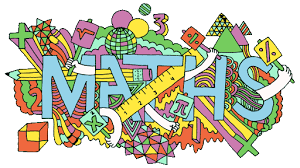Introducing Math Tasks, Starting on Monday, October 26th
Hello Everyone!
Over the last few weeks, we have been exploring conjectures, counterexamples, patterns, and proofs, which are some of the STRUCTURE and foundation of mathematical thinking.
During our discussion of conjectures and theorems such as the KOCH CURVE, SIERPINSKI’s TRIANGLE, and PASCAL’s TRIANGLE, we have practiced our critical thinking! We are getting better at approaching math challenges with two key questions in mind: What do I NOTICE? What do I WONDER?
We have also been talking about taking risks, digging deeper in our thinking, and taking MORE time to really investigate patterns, rather than speeding through or being satisfied with the first, immediate answer!
So, now, we are moving forward. I have given everyone a series of tasks to investigate the STRUCTURE of numbers, as well as the STRUCTURE of our mathematical thinking. We will be applying and learning about grade-level curricular content and competencies in math, while also using critical-thinking skills to talk about game and math-learning strategies!
The tasks involve BRAIN CROSSING — in other words, doing traditional math, but while also playing games and analyzing them, making visual representations of math concepts, creating a math rap, answering math questions online and in a book, and more. The more we cross between subject areas and skills, the more concepts are cemented in our brains. Plus, it is hopefully more fun!
The tasks are in a handout in their binders. The minimum amount for PROFICIENCY will be to finish the YOU DO THE MATH task as well as four other tasks of their choice by November 13th. But, I have a high expectation that everyone will be doing more than that, so students will definitely be encouraged to do more if they have time.
Students have a lot of choice and can complete tasks in any order. Depending on how they feel, they can work with a partner at a large table, or choose to sit alone for a bit at a private desk. I hope it will provide everyone with the appropriate level of engagement they need to explore our math curriculum with depth and complexity. If anyone needs help with the questions, I am here to guide and to teach students one-on-one.
Websites to explain the games, as well as more complex topics, are available under “Math” in the Articles of Interest.
I will give time in class each day and all games and tools are available in class. Some tasks can be completed at home, if catch up is needed or a student is sick, using online resources on the Articles of Interest, Math section of the Class Blog.
PLEASE: Unless a student is absent, or I direct everyone to do some math tasks at home, students need to be doing most of the work at school. They can take the tasks/binder/journal home, but they need to return to school each day. Thank you for your support with this.
The tasks allow us to investigate math content and curricular competencies across subject areas. For example, as they work together or alone, students will be able to:
- Practice and discuss elements of good learning and work habits
- Use critical-thinking skills to obtain information and mathematical understandings
- Exchange ideas and build shared understandings about the math content.
- Integrate language arts and math, using language in creative ways to express math understandings.
- Answer critical-thinking questions, ask questions of their own, corroborate inferences, and draw conclusions using evidence.
- Collect simple data to provide evidence about their thinking
- Use graphs and venn diagrams to make comparisons and organize the data.
- Develop mental math strategies and abilities to make sense of quantities (Magic Number activities, Sumoku game, Quirkle).
- Visualize to explore mathematical concepts (Quirkle, Blokus, Venn Diagrams)
- Use technology to explore mathematics (iPad videos, Math is Fun website, Domain of Science YouTube Channel, and more.)
- Develop, demonstrate, and apply math understandings through play, inquiry, and problem solving.
- Communicate math understandings in many ways.
- Work with addition and subtraction, multiplication and division, and multiples and factors according to their abilities and grade level.
- Explore patterns found in numbers and how they can be represented both visually and numerically.
- Investigate number concepts such as types of numbers (irrational, rational, integers, etc.), number lines, prime and composite numbers, and more.
Enjoy our math tasks!
Ms. D

